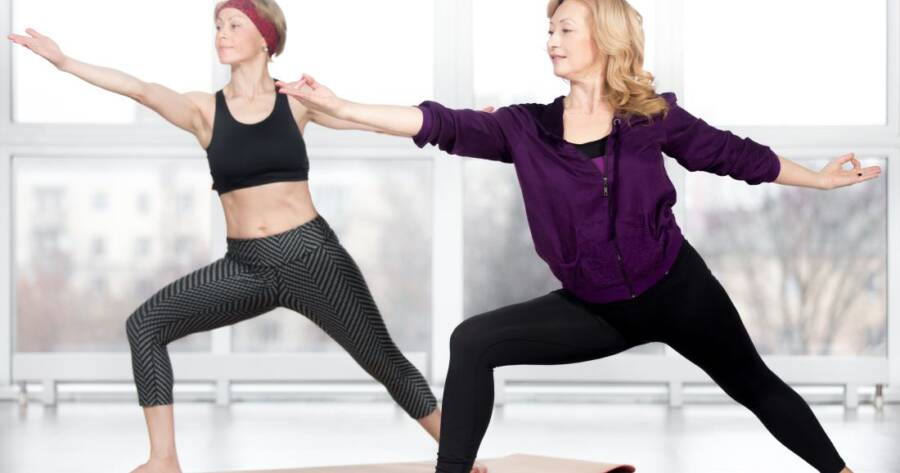While living with psoriatic arthritis can be challenging, it is possible. Below are 10 things you need to know about managing this condition:
Exercise Can Help
Moving your sore and stiff joints on a regular basis reduces inflammation, which also lessens joint pain. This means exercise greatly reduces the symptoms of psoriatic arthritis.
In addition, people who have this condition are at an increased risk of developing secondary conditions such as heart disease and diabetes. Exercise is the best way to ward of these conditions by increasing circulation and improving cardiovascular fitness. Of course, you must be careful to choose an activity that is low impact and easy on your joints such as:
- Swimming
- Yoga
- Walking
- Cycling
No matter which type of exercise you choose, remember to start slowly and work up to more intense exercise. Doctors recommend exercising most days of the week. While it is normal to be a little sore when starting a new activity, contact your doctor if you feel sharp pain that lasts several days.
Find a Support Group
Psoriatic arthritis can be a difficult condition to cope with on your own. You may find comfort in speaking with people who have the same condition. The National Psoriasis Foundation can help you find a support group. You may also join discussions in group forums on the website.
Try Stretching
Many people who are diagnosed with psoriatic arthritis find gentle stretching exercises helpful. These moves can keep joints limber and increase your range-of-motion, both of which will reduce joint pain. If you are a beginner, stretch your muscles to a tolerable level and gradually deepen the stretch over time. This will help you avoid injury while keeping joints and muscles flexible.
Apply Hot or Cold Packs
Chronic pain sufferers often find relief by using hot or cold packs. You can try applying hot packs to sore joints or taking a hot shower for relief. If heat exacerbates your pain, try applying cold packs to sore joints.
When using hot or cold packs, leave them on for 20 minutes then remove. To avoid burning your skin or developing frostbite symptoms, always place a cloth between the pack and your skin.
Modify Your Work Space
You spend a great deal of time at work, so you must take steps to be as comfortable as possible while you are there. Consult your supervisor to see if he might be willing to make some modifications to help reduce pain, which will increase your productivity on the job. These changes do not need to be drastic; even small changes can help. Some easy changes that may help keep your pain at bay include:
- Taking frequent breaks to walk
- Change the position of your computer and keyboard
- Adjusting the height of your chair
- Get help when lifting heavy items
Try a TENS Unit
If you are having trouble managing pain levels, ask you doctor if a TENS unit might help. This is a device that uses electrical stimulation to block pain signals from the brain. These devices are portable and easy to use. You simply place electrodes near painful joints and adjust the stimulation to tolerance.
Many people find TENS units one of the most effective treatments for psoriatic arthritis.
Use Prescription Medications
Your doctor may prescribe medications to treat moderate to severe pain. Since psoriatic arthritis is a chronic condition, your doctor will work with you to find medicine to help you stay comfortable and active. The following types of medications have been proven to be effective in reducing the pain and discomfort associated with psoriatic arthritis:
- Antidepressants
- Neurological medicines
- Topical creams containing Capsaicin
Biologic Medications
Alternative therapies may also be used to treat pain associated with psoriatic arthritis. Many doctors work with holistic practitioners experienced in techniques such as acupuncture, which has been found to relieve pain in many people. Ask your doctor if they can recommend alternative treatments if you are having trouble controlling your pain with conventional methods.
Use Devices
There are many devices that can help you get through everyday life more easily. A walker, cane, wheelchair or crutches may help you get around more easily and with less pain. You may find devices that can make reaching items on shelves easier. Some may provide assistance opening jar lids.
You may find your joints are so stiff, you have trouble getting in and out of the bathtub or shower. If that is the case, consider installing grab bars for assistance. This may give you added stability and reduce your chance of falling. If you are having trouble doing everyday tasks, speak with your doctor for advice.
Reduce Stress
Stress can cause flare-ups of psoriatic arthritis. For this reason, you must take steps to reduce anxiety levels if possible. Many people find that meditation helps them keep stress at bay. People who practice yoga also report decreased pain after a session.
You can also reduce stress by getting plenty of sleep. Most people need at least 8 hours of sleep at night to feel good. Find what works best for you and make sure you are in bed earlier enough to get it. Avoiding alcohol before bed will also help you stay asleep, so you rest better throughout the night.
Wear Good Shoes
Your shoes can make a huge difference in how you feel at the end of the day. Look for shoes with plenty of toe space and that have plenty of cushion. Some people find it helpful to go up a half size for comfort. If you are having trouble finding comfortable shoes, see a podiatrist for advice. He may be able to fit you with orthotics that support your feet and increase comfort. Many people find their health insurance covers the cost of orthotics prescribed and fitted by a podiatrist.
Psoriatic arthritis can be a difficult condition to live with, but you can manage it with some effort and lifestyle changes. Controlling stress and anxiety is not always easy, but it is key in keeping painful flare-ups at bay. With a little trial and error, you will find the right combination of things to help you cope with your disease. This will enable you to live the normal, active life you desire.
 fizkes / Shutterstock.com
fizkes / Shutterstock.com


